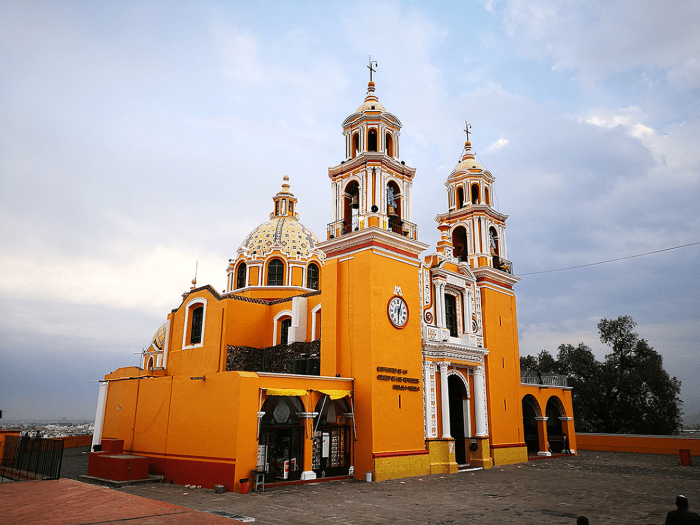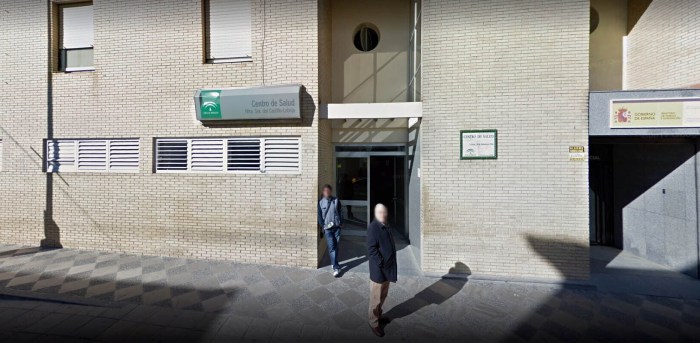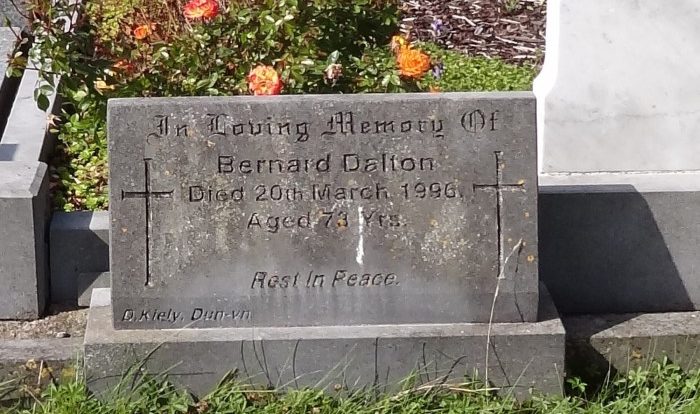In the literary landscape, “La Señora Castillo / El Centro” emerges as a captivating narrative that weaves together mystery and danger, inviting readers on a journey through a labyrinth of complex characters and a town shrouded in secrets. This novel explores the enigmatic figure of La Señora Castillo and the ominous presence of El Centro, revealing their intertwined destinies that shape the novel’s intricate plot.
La Señora Castillo, a woman of enigmatic nature, stands at the heart of the story, her motivations and connections to other characters forming a web of intrigue. The town of El Centro, with its physical and social peculiarities, becomes a stage for whispers and rumors, its secrets lurking beneath the surface, waiting to be unraveled.
La Señora Castillo: A Complex and Enigmatic Figure

La Señora Castillo is a pivotal character in the novel, whose background and motivations remain shrouded in mystery. As a wealthy widow, she exerts significant influence within the community and plays a crucial role in the central conflict of the story.
Background and Motivations
Despite her affluent lifestyle, La Señora Castillo’s past is marked by tragedy and loss. Her husband’s untimely demise left her with a profound sense of loneliness and a deep-seated desire for companionship. This longing drives her actions throughout the novel, as she seeks fulfillment through relationships with various characters.
Relationships with Other Characters
La Señora Castillo’s relationships are often complex and fraught with ambiguity. She maintains a close bond with her niece, Rosaura, yet harbors a deep-seated resentment towards her son, Esteban. Her interactions with the protagonist, Pedro Páramo, are characterized by both attraction and manipulation.
Role in the Novel’s Central Conflict
La Señora Castillo’s desire for companionship and her enigmatic nature contribute significantly to the central conflict of the novel. Her relationships with Pedro Páramo and Esteban create a web of deceit and betrayal that ultimately leads to tragic consequences. Her presence serves as a catalyst for the unfolding events, shaping the destinies of multiple characters.
El Centro: A Place of Mystery and Danger: La Señora Castillo / El Centro

El Centro, a remote town nestled amidst towering mountains and ancient forests, is a place shrouded in secrets and steeped in danger. Its physical and social characteristics contribute to its enigmatic atmosphere.
Physical Characteristics
El Centro’s isolation is palpable. Surrounded by dense vegetation and rugged terrain, it is accessible only by a treacherous mountain pass. The town itself is a labyrinth of narrow streets and dilapidated buildings, with a foreboding atmosphere that hangs heavy in the air.
Social Characteristics
The inhabitants of El Centro are a close-knit but secretive community. They are fiercely protective of their town and its traditions, and outsiders are met with suspicion and hostility. Rumors and superstitions abound, adding to the town’s enigmatic allure.
Role in the Novel’s Plot
El Centro serves as a central setting in the novel, playing a pivotal role in the unfolding plot. It is a place where secrets are hidden, alliances are forged, and danger lurks around every corner. The town’s isolation and the mysteries that surround it become catalysts for the characters’ journeys and the ultimate resolution of the story.
The Interplay Between La Señora Castillo and El Centro

La Señora Castillo and El Centro are inextricably linked entities that drive the narrative and shape the characters in the novel. Their relationship is complex and multifaceted, with profound implications for the plot and the novel’s themes.
Their Connected Nature, La señora castillo / el centro
La Señora Castillo is the enigmatic matriarch of the Castillo family, who resides in El Centro, a mysterious and dangerous neighborhood. El Centro is a place of violence, poverty, and despair, and it is here that La Señora Castillo exerts her enigmatic influence.
La Señora Castillo’s connection to El Centro is both literal and metaphorical. She is a physical presence in the neighborhood, but she also represents the darker, more sinister aspects of it. Her home is a refuge for criminals and outcasts, and she has a reputation for being ruthless and manipulative.
Impact on Characters and Plot
The relationship between La Señora Castillo and El Centro has a profound impact on the characters and the plot. La Señora Castillo’s influence over El Centro gives her power over those who live there. She can manipulate events and control the lives of others, often with devastating consequences.
The characters who come into contact with La Señora Castillo are often drawn into her web of deceit and danger. They become entangled in her schemes and find themselves facing impossible choices. The plot of the novel revolves around the consequences of these choices, as the characters struggle to escape La Señora Castillo’s influence and the dangers of El Centro.
Contribution to Themes
The interplay between La Señora Castillo and El Centro also contributes to the novel’s themes. The novel explores the themes of power, corruption, and redemption. La Señora Castillo represents the corrupting influence of power, while El Centro represents the darkness and despair that can result from it.
The characters who struggle against La Señora Castillo and the dangers of El Centro represent the possibility of redemption. They show that even in the darkest of places, there is always hope for a better future.
Symbolism and Motifs Related to La Señora Castillo and El Centro

The novel “La Señora Castillo” is replete with symbolic characters, objects, and events that contribute significantly to its meaning. These symbols enhance the novel’s themes and provide deeper insights into the characters and their motivations.
La Señora Castillo as a Symbol of Power and Mystery
La Señora Castillo’s enigmatic and powerful presence is a central symbol in the novel. Her mansion, El Centro, represents her control over the town and its inhabitants. The labyrinthine corridors and hidden rooms of El Centro symbolize the secrets and mysteries surrounding La Señora Castillo and her past.
While the case of La Señora Castillo / El Centro has been widely discussed, it’s worth noting the similarities to the case of Uffner v La Reunion Francaise . Both cases involve the rights of individuals in the face of state power, and raise important questions about the limits of government authority.
As we continue to follow the developments in La Señora Castillo / El Centro, it’s crucial to draw lessons from past cases like Uffner v La Reunion Francaise to ensure that individual rights are protected.
The Mirror as a Symbol of Identity and Self-Reflection
The mirror plays a crucial role in the novel, representing the characters’ struggles with identity and self-discovery. La Señora Castillo’s obsession with her appearance and the mirror reflects her need for control and validation. Conversely, Ana’s confrontation with her own reflection in the mirror symbolizes her journey towards self-acceptance.
The Garden as a Symbol of Beauty and Danger
The garden surrounding El Centro is a symbol of both beauty and danger. Its lush vegetation and vibrant colors represent the allure of La Señora Castillo’s world. However, the poisonous plants and hidden thorns symbolize the dangers lurking beneath the surface.
Motifs of Betrayal and Deceit
Betrayal and deceit are recurring motifs throughout the novel. La Señora Castillo’s manipulation of her family and friends highlights the corrosive effects of treachery. Ana’s struggle to trust others after her traumatic experiences reinforces the theme of betrayal.
Motifs of Isolation and Loneliness
Isolation and loneliness are prevalent motifs in “La Señora Castillo.” La Señora Castillo’s solitary existence in El Centro symbolizes her emotional detachment from the world. Ana’s feelings of isolation after her return to her hometown reflect the lasting effects of trauma.
Cultural and Historical Context of La Señora Castillo and El Centro

The novel “La Señora Castillo y El Centro” is deeply rooted in the historical and cultural context of its setting. The story takes place in Mexico during the Porfiriato era, a period of significant social and political change. The novel reflects the social and political realities of the time, including the growing gap between the wealthy and the poor, the rise of foreign influence, and the struggle for national identity.
Historical Influences
The Porfiriato era was a period of economic growth and modernization in Mexico, but it was also a time of great inequality. The gap between the wealthy elite and the poor majority widened, leading to social unrest and political instability.
The novel reflects these tensions through the characters of La Señora Castillo and El Centro. La Señora Castillo represents the wealthy elite, while El Centro represents the poor and marginalized. The novel explores the ways in which these two worlds collide and the consequences of their interaction.
Cultural Influences
The novel also reflects the cultural influences of its time. The Porfiriato era was a period of cultural transformation in Mexico. Traditional Mexican culture was blended with European influences, creating a new and unique Mexican identity. The novel reflects this cultural fusion through its use of language, imagery, and symbolism.
Themes and Meaning
The historical and cultural influences that shaped the novel contribute to its themes and meaning. The novel explores themes of social inequality, the struggle for national identity, and the clash between tradition and modernity. The novel also reflects the complex and contradictory nature of Mexican society.
FAQ Compilation
Who is La Señora Castillo?
La Señora Castillo is a complex and enigmatic figure whose motivations and relationships drive the novel’s plot.
What is El Centro?
El Centro is a town shrouded in mystery and danger, its secrets and rumors shaping the lives of its inhabitants.
How are La Señora Castillo and El Centro connected?
The connection between La Señora Castillo and El Centro is central to the novel, influencing the characters and plot, and contributing to the novel’s themes.
